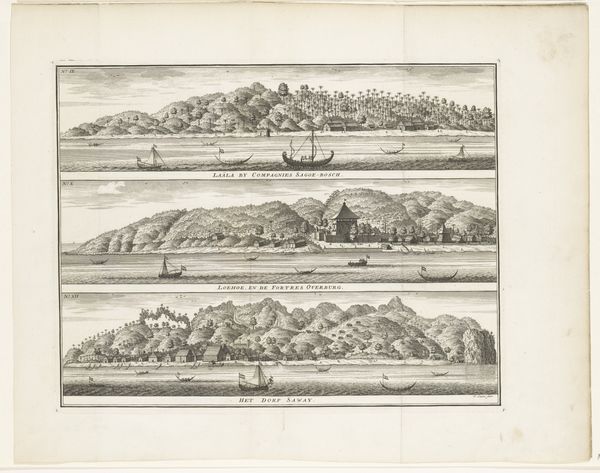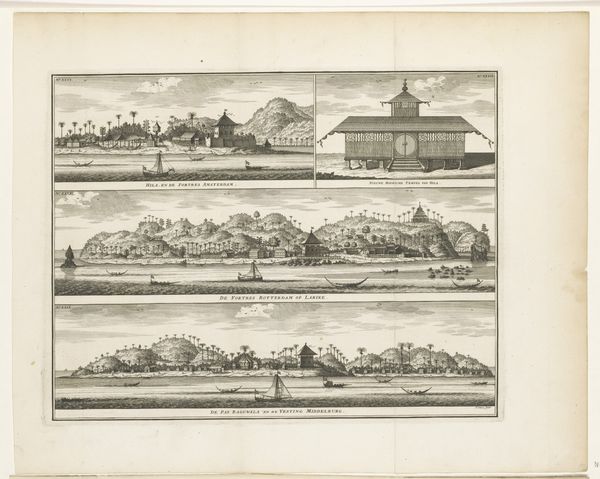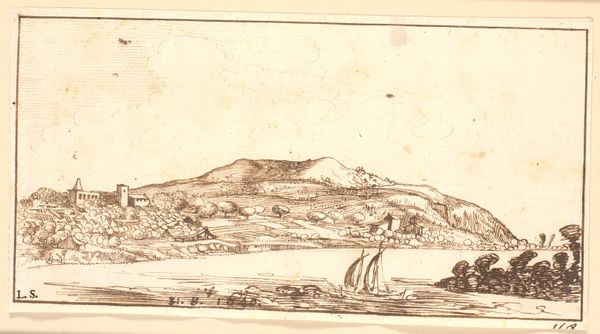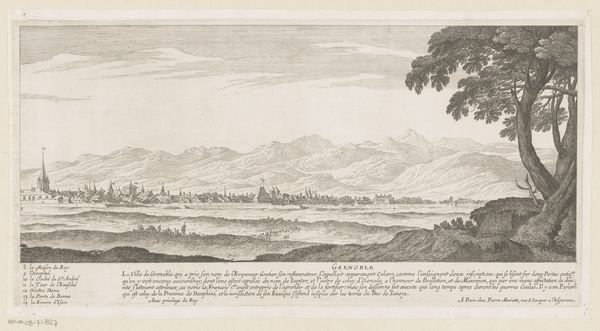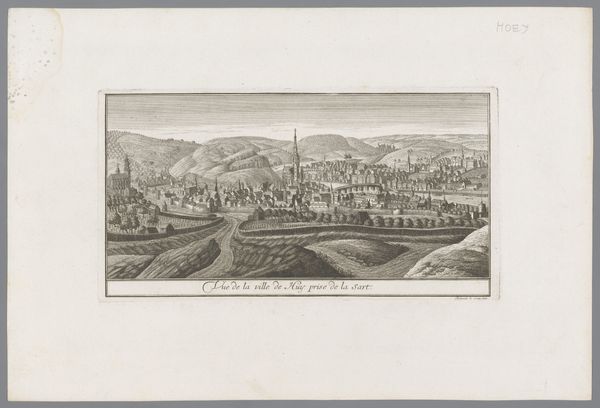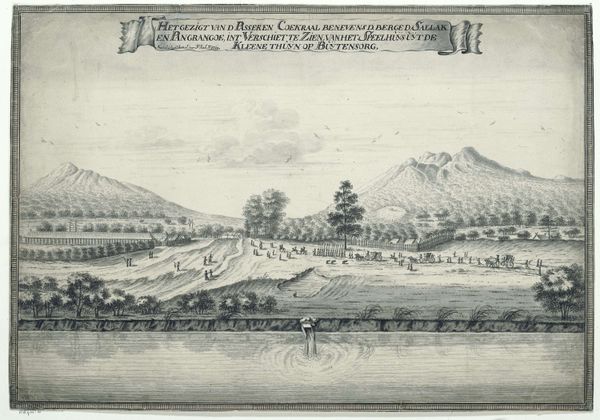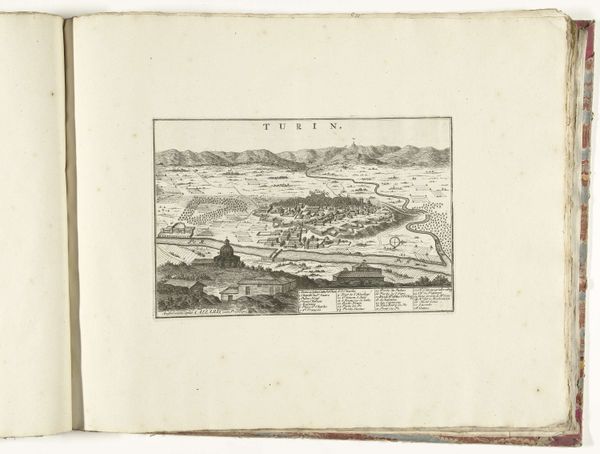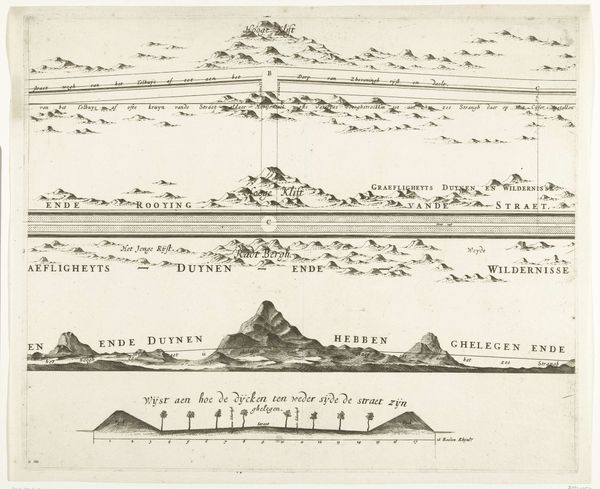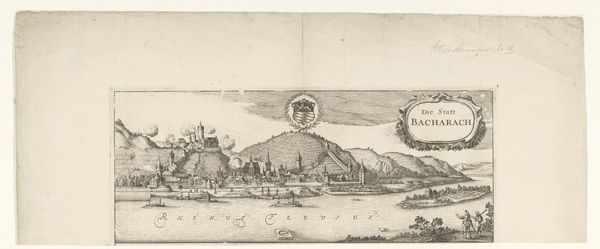
drawing, print, paper, ink, engraving
#
drawing
#
baroque
#
dutch-golden-age
# print
#
landscape
#
paper
#
ink
#
orientalism
#
cityscape
#
history-painting
#
engraving
Dimensions: height 305 mm, width 585 mm
Copyright: Rijks Museum: Open Domain
Curator: This is “Drie vestingen in de Molukken,” or "Three Fortresses in the Moluccas," an engraving created by Frederik Ottens sometime between 1722 and 1724. Editor: It’s surprisingly soothing for a depiction of colonial fortifications. It looks like a tranquil postcard. But something feels inherently… off. Curator: Well, the "off" feeling might come from knowing the piece portrays Dutch colonial power in the Moluccas during that period. Ottens meticulously rendered these fortresses—each presented as a neat, panoramic view with an almost clinical detachment. It’s very Baroque, wouldn’t you say, in its detailed precision? Editor: Baroque, yes, in its attention to detail and ornamentation, but almost sterile in its depiction of control and possession. Semiotically, it's fascinating. The neat rows of trees, the carefully positioned boats, the architectural dominance… They are signs pointing to a calculated assertion of power, hiding, I believe, something sinister in this very formal structure. Curator: Exactly! Each element is methodically placed within the frame, and together it reinforces the sense of Dutch authority in the region. The fortresses stand as visual metaphors, structures erected to claim territory and control trade. And in contrast with, let's say, typical Baroque paintings of the time, this print offers no dynamism, or much in the way of emotional narrative. Instead, everything appears carefully classified, measured, and dominated. Editor: The composition reflects that attitude—the horizontal layout gives a wide view that flattens any depth. Everything's on display but presented in this strangely unemotional and "rational" manner. And in that little fortress schematic, they appear so vulnerable, so self-contained! They look more like prisons from that perspective! I get a real shiver thinking about it. Curator: Yes! Ottens does not celebrate or romanticize any heroic ideal but catalogs in almost administrative exactitude. Maybe he was too knowing to even want to celebrate. His visual strategy isn’t to inspire pride or rally nationalistic feelings but rather to assert the efficient command of distant lands. Editor: It is quite a sobering demonstration of how style can speak volumes when even the most outwardly neutral depictions become loaded with deeper implications. These quiet horizons are deceptively loud in retrospect! Curator: Indeed! They invite us to consider the multifaceted layers through which the legacy of Dutch colonialism resonates.
Comments
No comments
Be the first to comment and join the conversation on the ultimate creative platform.
